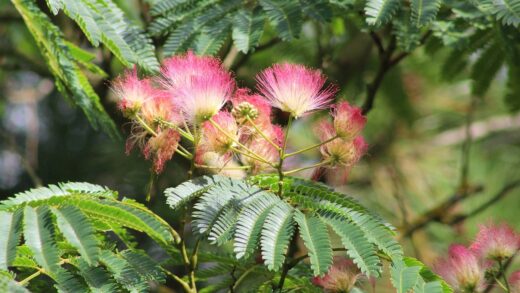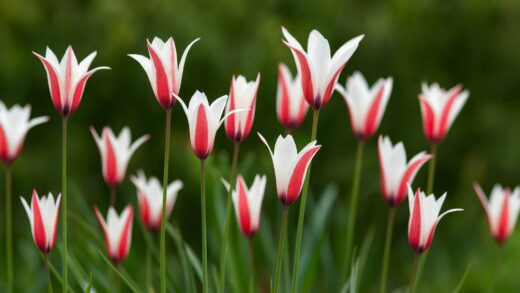Providing the right nutrition is a critical aspect of garden management, but for the blanket flower, the philosophy is decidedly “less is more.” This rugged perennial has adapted to thrive in the lean, nutrient-poor soils of its native prairie home, and it retains this preference in the garden environment. Understanding its modest nutrient requirements is key to cultivating a plant that is sturdy, floriferous, and healthy. Over-fertilization is one of the most significant threats to a blanket flower’s wellbeing, often leading to weak, floppy growth and a disappointing lack of blooms. The goal is not to pamper the plant with rich food, but rather to provide just enough essential nutrients to support its natural vigor.
Blanket flowers are not heavy feeders and will generally perform exceptionally well in average garden soil without any supplemental fertilization at all. Their efficient root systems are adept at extracting the necessary minerals from soils that other, more demanding plants might struggle in. In fact, overly rich soil or the application of high-nitrogen fertilizers can be counterproductive. It tends to stimulate a burst of lush, green foliage at the expense of flower production. This soft, rapid growth also results in weak stems that are unable to support the weight of the blooms, causing them to flop over and creating a less attractive, sprawling habit.
This preference for lean conditions means that your primary focus should be on the soil’s structure and drainage rather than its fertility. If you have prepared your garden bed correctly by ensuring it is well-drained and friable, you have already provided the most important foundation for a healthy blanket flower. In most cases, the slow decomposition of organic matter already present in the soil will release a steady, gentle supply of nutrients that is perfectly adequate for the plant’s needs throughout the growing season. Resisting the temptation to add extra fertilizer is often the best course of action.
For gardeners with extremely poor, sandy, or gravelly soil that is deficient in all nutrients, a minimal amount of feeding can be beneficial. The key is to be judicious and select the right type of fertilizer. A single, light application of a balanced, slow-release granular fertilizer in the early spring as new growth emerges is all that is ever required. This provides a gentle, season-long supply of nutrients without overwhelming the plant. Alternatively, amending the soil with a thin layer of well-rotted compost at the time of planting provides a natural and slow-releasing source of essential minerals.
Understanding the role of key nutrients
To make informed decisions about fertilization, it is helpful to understand the role of the three primary macronutrients, often represented by the N-P-K ratio on fertilizer packaging. Nitrogen (N) is primarily responsible for promoting vegetative growth, meaning the development of leaves and stems. While essential for all plants, an excess of nitrogen is what causes the weak, floppy growth and reduced flowering in blanket flowers. It signals the plant to invest its energy in foliage rather than in producing its vibrant, daisy-like blooms, which is the opposite of what most gardeners desire.
More articles on this topic
Phosphorus (P) plays a crucial role in a variety of fundamental plant processes, most notably root development, energy transfer, and the formation of flowers, fruits, and seeds. For flowering perennials like the blanket flower, an adequate supply of phosphorus is vital for a prolific blooming season. This is why fertilizers formulated for flowering plants, often called “bloom boosters,” typically have a higher middle number in their N-P-K ratio. A soil that is naturally sufficient in phosphorus will support strong flowering without any intervention.
Potassium (K), the third primary nutrient, is essential for the overall health and vigor of the plant. It helps to regulate water movement within the plant’s cells, strengthens cell walls, and enhances the plant’s resistance to environmental stresses such as drought, heat, and disease. A good supply of potassium contributes to sturdy stems, a robust root system, and the overall resilience of the blanket flower. It is a key component for long-term plant health and longevity, helping the plant to withstand the challenges of the garden environment.
Given these roles, if you do decide to fertilize your blanket flower, it is best to choose a product that is low in nitrogen and has a balanced or slightly higher proportion of phosphorus and potassium. A fertilizer with an N-P-K ratio such as 5-10-10 or 3-5-4 would be a much better choice than a general-purpose lawn fertilizer with a high nitrogen content like 20-5-5. This targeted approach to nutrition ensures you are supporting the specific needs of the blanket flower, encouraging strong stems and abundant blooms rather than just leafy growth.
Organic vs synthetic fertilizers
When choosing to provide supplemental nutrients, gardeners have the option between organic and synthetic fertilizers. Organic fertilizers are derived from natural materials such as compost, aged manure, bone meal, or fish emulsion. Their primary advantage is that they release nutrients slowly as they are broken down by microorganisms in the soil. This slow-release process mimics natural nutrient cycling and significantly reduces the risk of over-fertilizing or burning the plant’s roots. Organic materials also improve soil structure, water retention, and the overall health of the soil ecosystem.
More articles on this topic
For blanket flowers, organic options are almost always the superior choice. A top dressing of well-rotted compost applied in the spring is an excellent way to provide a gentle and balanced feed. Compost not only supplies a wide range of micronutrients but also enhances soil life and improves drainage and aeration over time. Another option is to mix a small amount of bone meal into the planting hole when you first install the plant. Bone meal is a natural source of phosphorus, which can help to promote strong root establishment and future flowering.
Synthetic fertilizers, on the other hand, are manufactured chemical compounds that provide nutrients in a concentrated, water-soluble form. They are fast-acting and can provide a quick boost to plants, but this is precisely what makes them generally unsuitable for blanket flowers. Their rapid release of nutrients, particularly nitrogen, can easily lead to the undesirable weak, leggy growth. There is also a much higher risk of over-application, which can burn the plant’s roots and damage soil microbes. If used, they must be applied with extreme caution and at a highly diluted strength.
In summary, the inherent nature of the blanket flower aligns perfectly with the principles of organic gardening. The plant’s preference for a slow, steady supply of nutrients and its sensitivity to chemical overload make organic amendments like compost the ideal choice. By focusing on building healthy, living soil with organic matter, you create a sustainable system that provides everything the blanket flower needs to thrive without the risks associated with synthetic chemical feeds. This approach benefits not only the plant but the entire garden environment.
Application timing and methods
If you determine that your soil is truly poor and your blanket flowers would benefit from feeding, the timing of the application is crucial. The best time to fertilize is in the early spring, just as the plant is breaking dormancy and you can see the first signs of new growth emerging from the base. Fertilizing at this time provides the plant with the necessary resources to support its initial growth spurt and the development of flower buds for the upcoming season. A single application in the spring is usually sufficient for the entire year.
Avoid fertilizing your blanket flowers in the late summer or autumn. Applying fertilizer, especially one containing nitrogen, late in the season can stimulate a flush of new, tender growth. This new growth will not have sufficient time to harden off before the first frosts and will be highly susceptible to winter damage. Late-season feeding can disrupt the plant’s natural process of preparing for dormancy, potentially reducing its winter hardiness and overall chances of survival. Let the plant slow down its growth naturally as the days shorten and temperatures cool.
When it comes to the method of application, it depends on the type of fertilizer you are using. For granular slow-release fertilizers, sprinkle the recommended amount evenly on the soil surface around the base of the plant, being careful to avoid direct contact with the stems and leaves. Gently scratch the granules into the top centimeter of soil with a hand cultivator or your fingers. After applying, water the area thoroughly to help dissolve the granules and carry the nutrients down into the root zone where they can be absorbed.
For organic amendments like compost or aged manure, the application is even simpler. Spread a thin layer, perhaps 2-3 centimeters deep, over the soil surface around the plant, extending out to its drip line. This process, known as top dressing, allows the nutrients to be slowly washed down into the soil with each rainfall or watering. You can apply this compost layer in the spring, and it will also serve as a light mulch, helping to conserve soil moisture and suppress weeds. This method is gentle, effective, and improves the soil at the same time.
Diagnosing nutrient deficiencies
While over-fertilization is a more common problem, it is possible for blanket flowers to show signs of nutrient deficiency, especially when grown in very sandy soil or in containers where nutrients can leach out over time. A general lack of vigor, stunted growth, and pale or yellowing leaves can all be indicators of a nutritional issue. It is important to distinguish these symptoms from those of overwatering or disease, so always assess the soil moisture and overall plant health first.
A common deficiency in flowering plants is a lack of phosphorus. A plant that is phosphorus-deficient may exhibit healthy-looking green foliage but produce very few or no flowers. The leaves may also take on a purplish or reddish tinge, particularly on older foliage. If you have ruled out other issues like insufficient sunlight and your plant is otherwise healthy but not blooming, a lack of phosphorus could be the culprit. In this case, a fertilizer with a higher middle number (P) or an organic amendment like bone meal could be beneficial.
Yellowing leaves, a condition known as chlorosis, often point to a nitrogen deficiency, especially if the yellowing starts with the older, lower leaves and progresses up the plant. However, for blanket flowers, this is less common due to their low nitrogen requirements. Chlorosis can also be caused by a lack of micronutrients like iron or magnesium, which can occur in soils with a very high pH (alkaline). In such cases, the soil chemistry makes these nutrients unavailable to the plant. A soil test would be necessary to confirm the issue and determine the best course of action, which might involve applying a chelated iron product or adjusting the soil pH.
Before reaching for fertilizer to correct a suspected deficiency, it is always a good idea to double-check the plant’s other growing conditions. Insufficient sunlight is the number one reason for poor flowering, and improper watering is the most common cause of yellowing leaves. Ensure these fundamental requirements are being met before you start adding nutrients to the soil. Often, correcting a cultural issue will resolve the problem without the need for any fertilizer. If you do suspect a deficiency, start with the mildest possible solution, such as an application of compost, and observe the plant’s response.




















